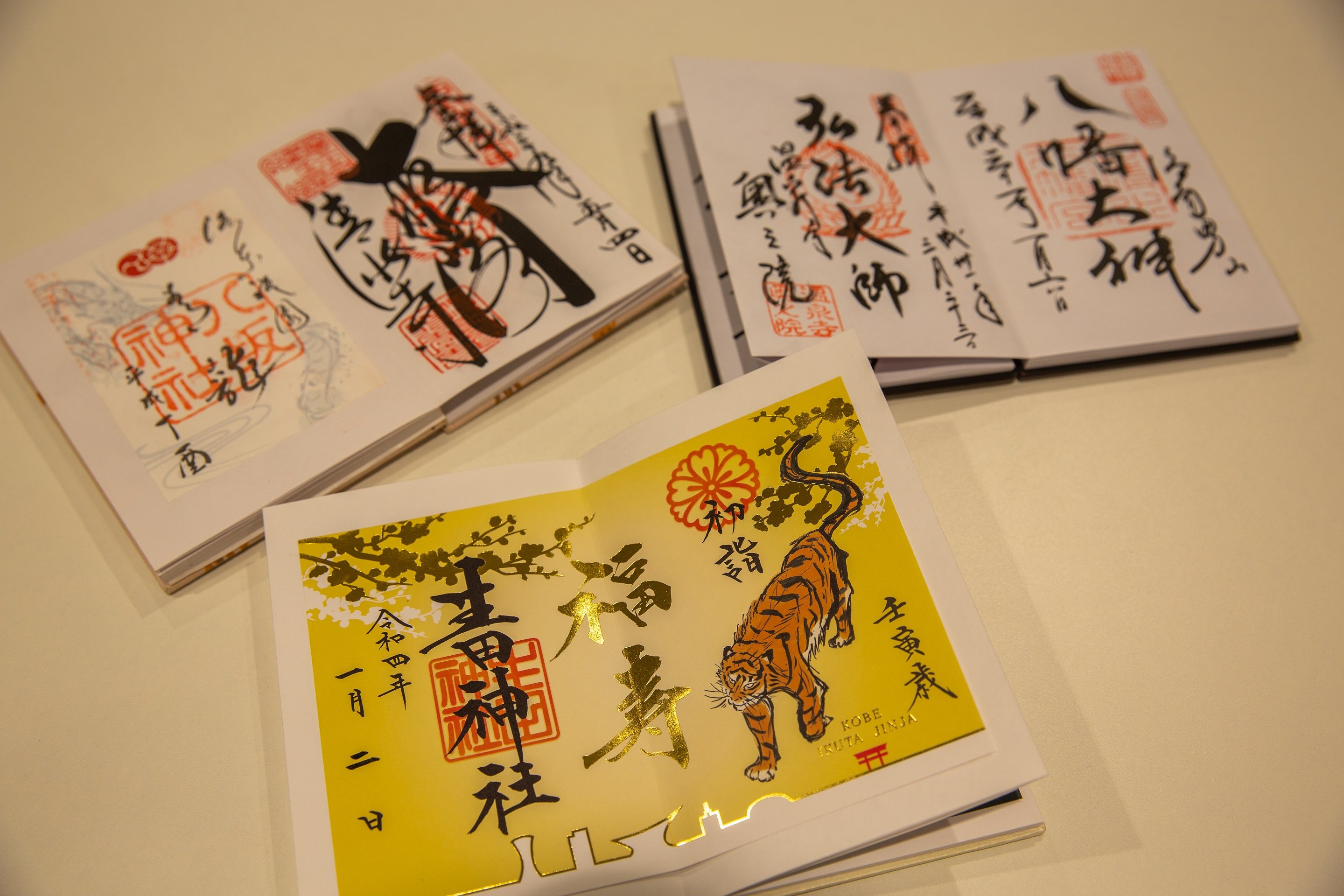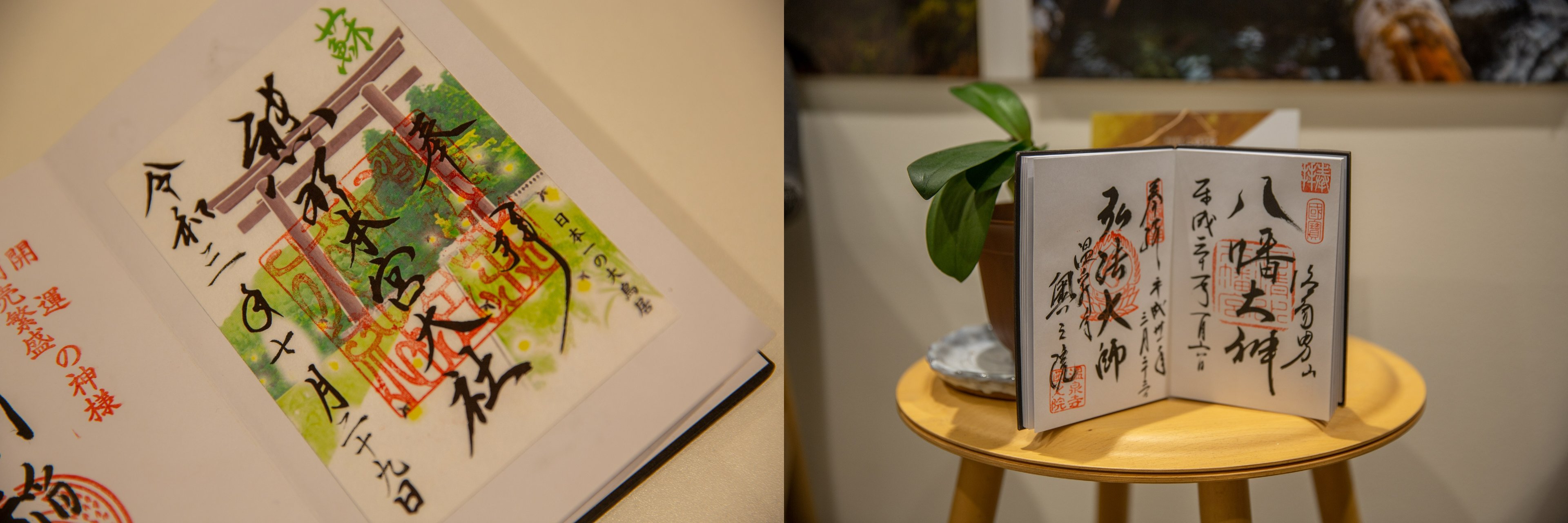Goshuin Temple and Shrine Stamps
Handwritten Artworks that Record a Journey
A small book that folds out like a paper screen, adorned with calligraphy in red and black ink…or sometimes with a cute animal. They are different from stamps that you press yourself; watching them being drawn is a delight each and every time. Some consider them little pieces of art, as each one is handwritten with beautiful calligraphy. The ancient tradition of collecting goshuin (御朱印/red seal) is still alive and well, but now has a few modern twists.
The pages of a goshuincho (御朱印帳/red seal book) keep a record of every shrine and temple visited. The date and location are written on every seal, making it a personal travelogue of your spiritual journey. It is believed that goshuin were created during the Nara period (710–794) to have an official record of pilgrimages. Initially called noukyoucho (納経帳), goshuin stamps were given as a receipt for copying scriptures and giving temple offerings.
 Originally goshuin were collected on a single scroll that could later be displayed. The modern goshuincho with its hard cover is a recent addition from the Taisho period (1912–1926) and is much easier to carry around. You can still buy the hanging scrolls at major pilgrimages such as the Shikoku 88 or the Kumano Kodo. For Shikoku, you can even request that the red seal be stamped onto your white pilgrim’s robe.
Originally goshuin were collected on a single scroll that could later be displayed. The modern goshuincho with its hard cover is a recent addition from the Taisho period (1912–1926) and is much easier to carry around. You can still buy the hanging scrolls at major pilgrimages such as the Shikoku 88 or the Kumano Kodo. For Shikoku, you can even request that the red seal be stamped onto your white pilgrim’s robe.
A goshuincho serves as a sort of passport for the next life at the end of this one, proving how faithful a person was. It is usually laid to rest next to the body of the deceased, but may just as often be displayed on a home altar to protect the family; a completed goshuincho is equivalent to a powerful amulet. The more books someone finishes, the more protection they will receive.
Where to buy goshuincho
Bookstores and tourist shops sell goshuincho, but shrines and temples also offer their own unique designs. You can find the books at the goshuin counter; when you buy one, the local goshuin is usually included. Most goshuincho books are between 1,500 and 3,000 yen.
How do I receive a goshuin?
Nearly every shrine and temple has a counter where you can receive a goshuin stamp. Sometimes they are easily spotted, with people waiting in line with their books. Other times they are hidden in buildings on the temple or shrine precincts.
If there is a long line, the attendant might take your book and hand you a number. You can give your book with the page opened to where you want the goshuin, otherwise it will be drawn on the next blank page. If your goshuincho book is new, some major shrines will leave the first two pages blank to keep spaces for Ise Grand Shrine’s inner and outer shrines. Ise Grand Shrine is considered the head of all Japan’s shrines, which is why it gets this honour. A visit to the Grand Shrine is included in our 4-day or 5-day Iseji tour, and you can indicate that you want to leave these pages blank yourself by pointing to the third page of your goshuincho when giving it to the attendant.
A goshuin is 300 – 500 yen, and is usually cash only.

Some temples and shrines offer more than one red goshuin seal; there are seals for subordinate or concurrent shrines, as well as the head shrine. Temples’ goshuin offerings are sometimes divided into halls and some even have red seals for specific statues. You can find goshuin with fun quirks, such as Iwashimizu Hachimangu Shrine in Kyoto, which writes the character for eight (八) as two birds. There are even colourful, more modern, goshuin for special occasions, or goshuin you can only receive on certain days of the month. As an example, Hongu Grand Shrine on the Kumano Kodo has a special goshuin stamps for each season. You can keep coming back to get the full collection!
Collect them all!
Goshuin aren’t limited to pilgrimage routes and can be found all over Japan. If you haven’t filled out your book on your first trip, that’s a great reason to come back!

